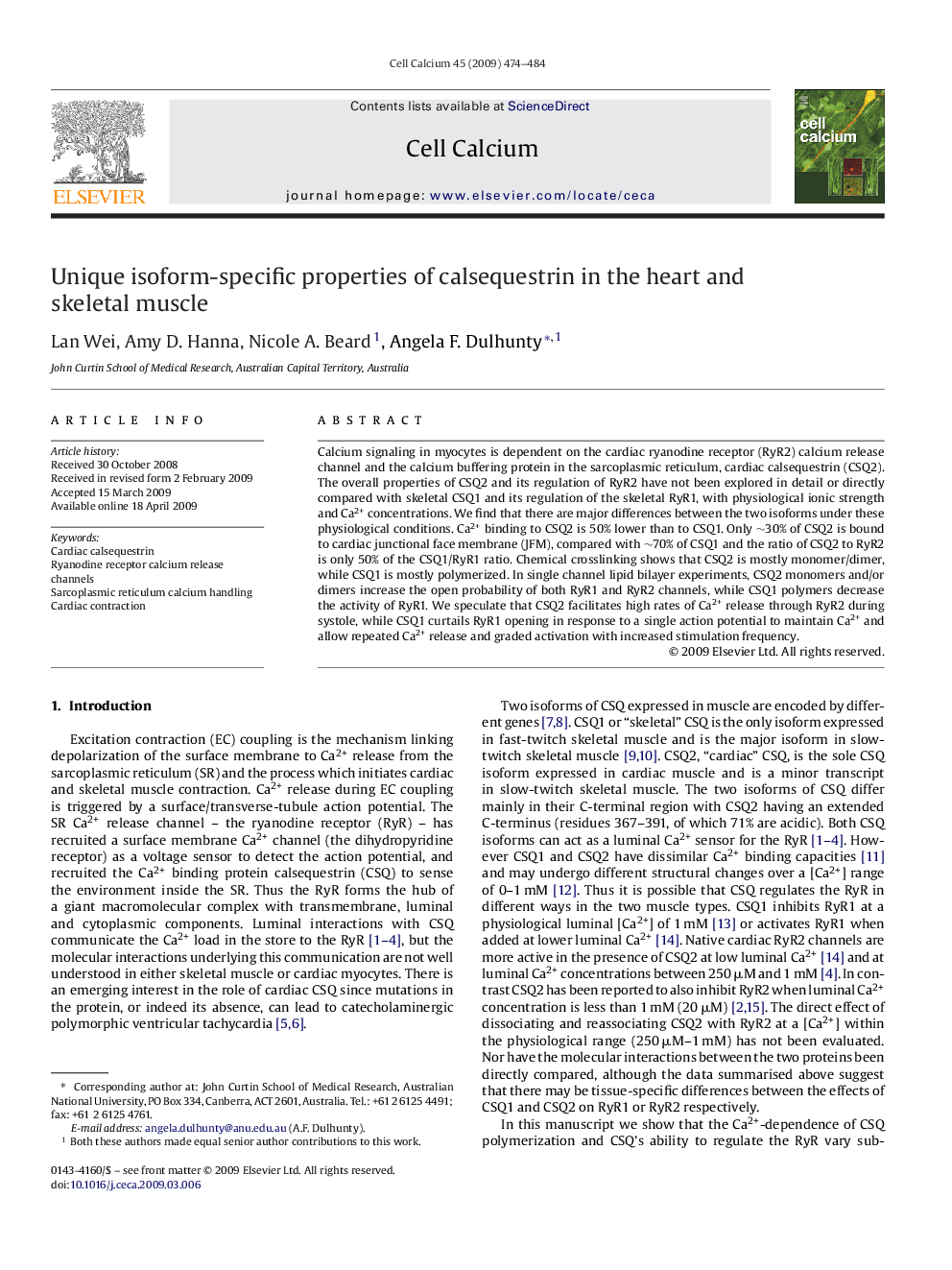| Article ID | Journal | Published Year | Pages | File Type |
|---|---|---|---|---|
| 2166248 | Cell Calcium | 2009 | 11 Pages |
Calcium signaling in myocytes is dependent on the cardiac ryanodine receptor (RyR2) calcium release channel and the calcium buffering protein in the sarcoplasmic reticulum, cardiac calsequestrin (CSQ2). The overall properties of CSQ2 and its regulation of RyR2 have not been explored in detail or directly compared with skeletal CSQ1 and its regulation of the skeletal RyR1, with physiological ionic strength and Ca2+ concentrations. We find that there are major differences between the two isoforms under these physiological conditions. Ca2+ binding to CSQ2 is 50% lower than to CSQ1. Only ∼30% of CSQ2 is bound to cardiac junctional face membrane (JFM), compared with ∼70% of CSQ1 and the ratio of CSQ2 to RyR2 is only 50% of the CSQ1/RyR1 ratio. Chemical crosslinking shows that CSQ2 is mostly monomer/dimer, while CSQ1 is mostly polymerized. In single channel lipid bilayer experiments, CSQ2 monomers and/or dimers increase the open probability of both RyR1 and RyR2 channels, while CSQ1 polymers decrease the activity of RyR1. We speculate that CSQ2 facilitates high rates of Ca2+ release through RyR2 during systole, while CSQ1 curtails RyR1 opening in response to a single action potential to maintain Ca2+ and allow repeated Ca2+ release and graded activation with increased stimulation frequency.
